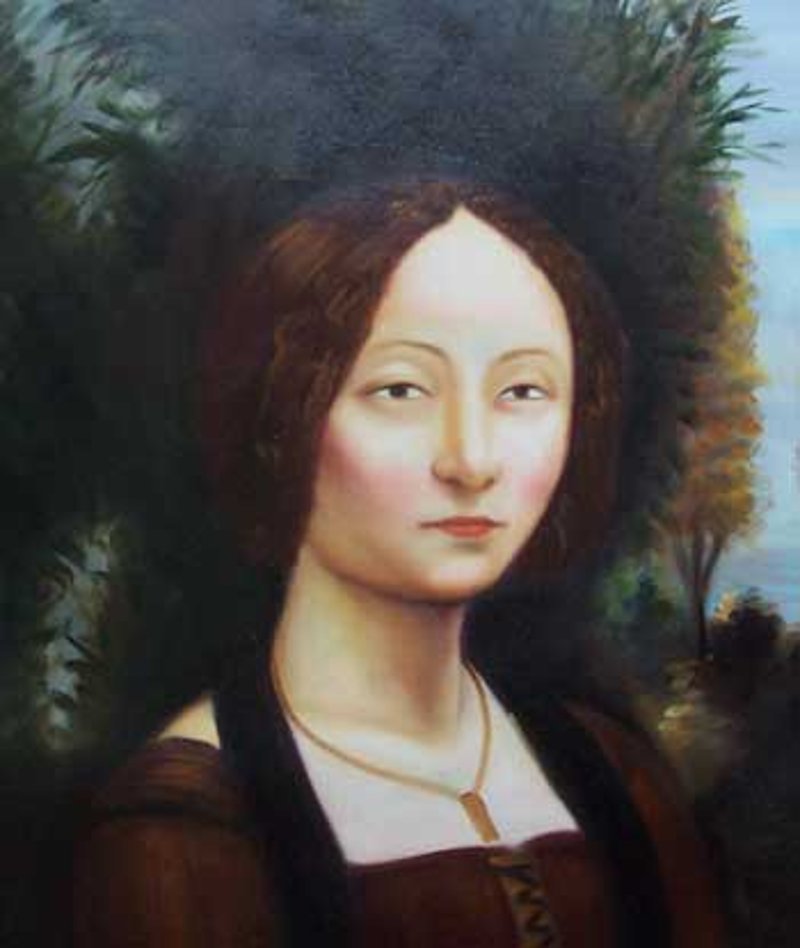
Quadro Ginevra de Benci di Leonardo, falso d'autore 60x50cm Ritratti
Portrait of Ginevra de' Benci was painted by Leonardo da Vinci around 1474-1476. It is oil on wood and measures 42 x 37 cm (16 1/2 x 14 1/2 in.) It is now owned by National Gallery of Art, Washington, DC and is currently the only painting by Leonardo in the Americas. A lady of the aristocratic class in 15th century Florence, Ginevra de' Benci.

"Ginerva de' Benci" Leonardo da Vinci (14748) National gallery of
"Ginevra de' Benci" by Leonardo da Vinci depicts a well-known young Florentine aristocrat. Leonardo painted the portrait in Florence in 1474 to commemorate Ginevra's marriage at the age of 16. The juniper bush that fills much of the background was regarded as a symbol of female virtue, in Renaissance Italy, while the Italian word for.

Ginevra de’ Benci e il mistero de La Gioconda Bagno a Ripoli eChianti
Brachert, Thomas. "A Distinctive Aspect in the Painting Technique of the Ginevra de'Benci and of Leonardo's Early Works." Studies in the History of Art (1969-70): 84-104, repro. 1975 European Paintings: An Illustrated Summary Catalogue. National Gallery of Art, Washington, 1975: 192, repro.
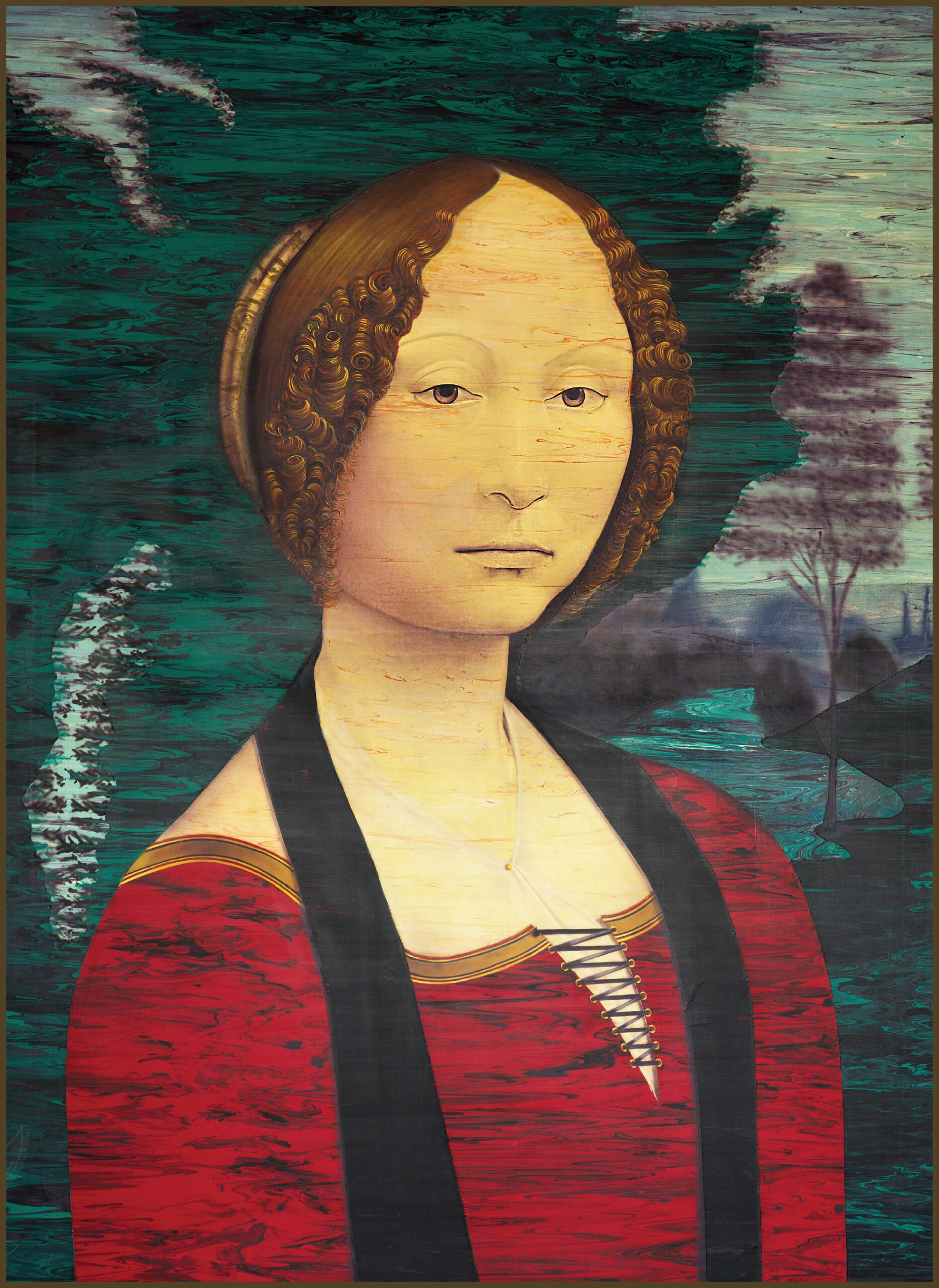
The Portrait of Ginevra De Benci Bharat dalal
A reconstructed image of "Ginevra de' Benci" c.1474/1478 by Leonardo da Vinci National Gallery of Art, Washington DC. The painting was originally larger. At some point the bottom of the panel was cut down along the bottom. A surviving drawing by Leonardo suggests that Ginevra's hands were lightly cradled at her waist.

12 Facts About Ginevra de Benci By da Vinci
Ginevra de' Benci is a portrait painting by Leonardo da Vinci of the 15th-century Florentine aristocrat Ginevra de' Benci (born c. 1458). The oil-on-wood portrait was acquired by the National Gallery of Art in Washington, D.C. in 1967. The sum of US$5 million—an absolute record price at the time—came from the Ailsa Mellon Bruce Fund and was paid to the Princely House of Liechtenstein.

The Ghost of Ginevra de’ Benci Rare Digital Artwork MakersPlace
Riproduzioni su misura dei quadri e dipinti di Leonardo Da Vinci. Più di 300 opere. Stampe o dipinti fabbricati su misura, al formata scelto, con l'incorniciatura scelta

Ginevra De Benci Painting Images & Pictures Becuo
Leonardo da Vinci, Ginevra de' Benci [obverse], c. 1474/1478, oil on panel, Ailsa Mellon Bruce Fund, 1967.6.1.a. Leonardo was born in 1452 in the Italian village of Anchiano, near Vinci, his namesake. His parents never married—his mother, Caterina, was spurned by his father, Ser Piero da Vinci, as she was from a lower social class.

da Vinci Ginevra De’Benci Kerrisdale Gallery
The Ginevra de' Benci is a portrait of the 15th-century Florentine aristocrat Ginevra de' Benci (born around 1458) by Leonardo da Vinci. Ginevra de' Benci, age 16, or 17, is a babysitter, who is dressed in a brown with blue laces and gold trim, as well as a black scarf. She wears a delicate white shirt with a golden pin beneath the outfit.
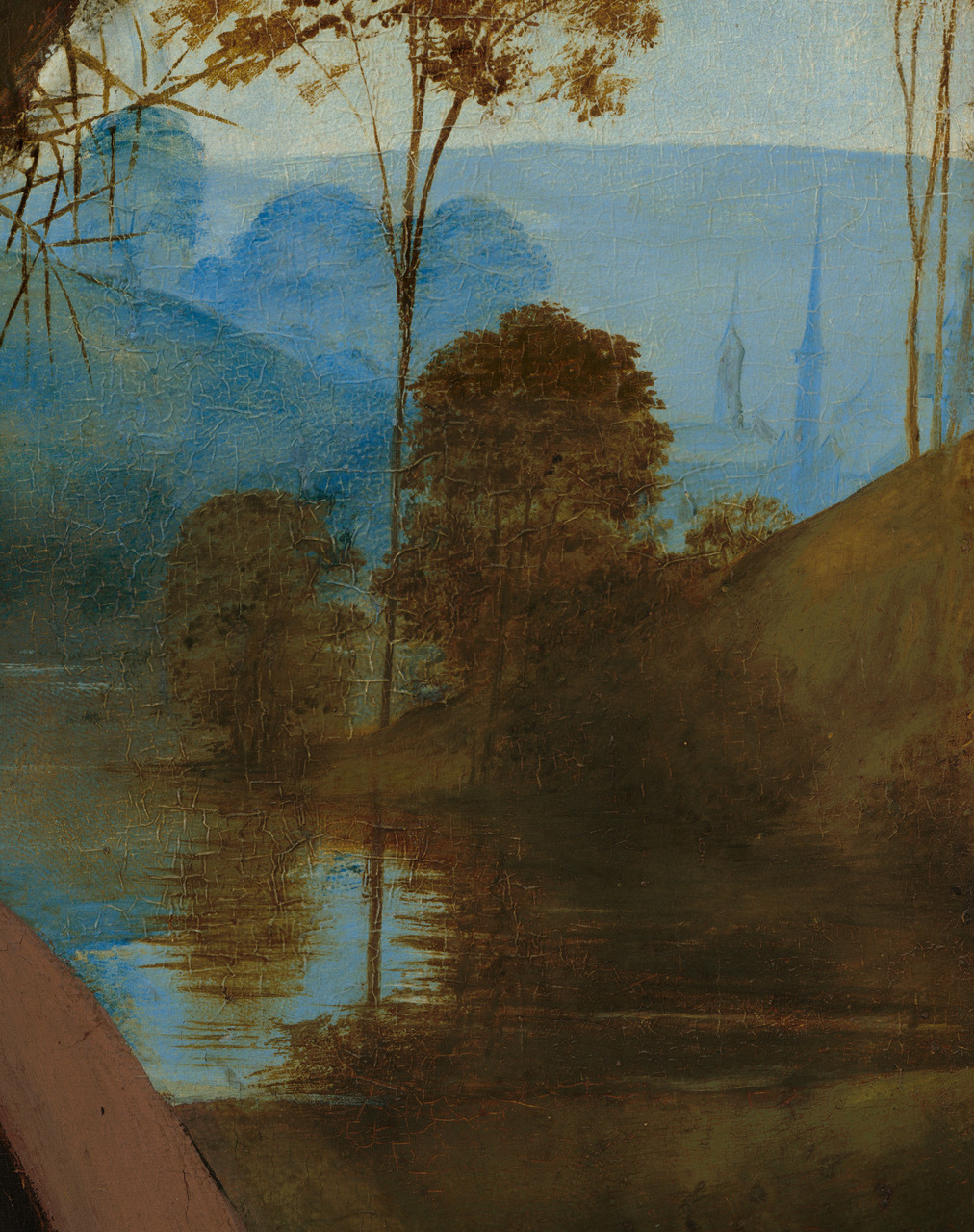
Magnani"Questo di Leonardo non è il ritratto di Ginevra de' Benci, ma
Ginevra de' Benci was a famous local beauty in Florence at the time of this commission, and the artist was well acquianted with the Benci family. Many had courted her, with poets even featuring her within various passages, always speaking of her beauty in glowing terms. In normal circumstances Da Vinci may well not have been persuaded to part.
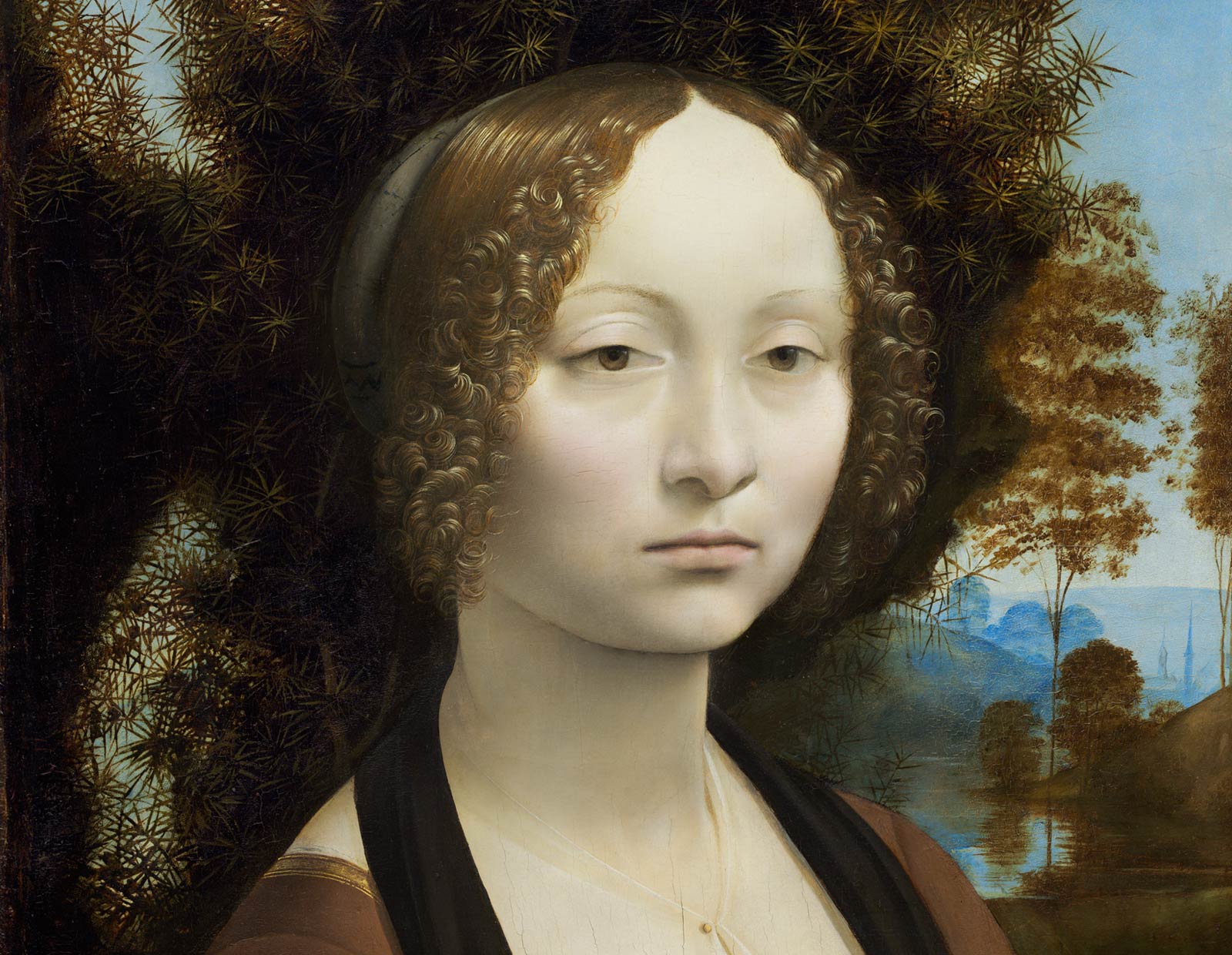
Leonardo da Vinci, Ginevra de' Benci, c. 1474/1478
2. It's a rather small painting. One of the most remarkable facts about Ginevra de' Benci is that this oil on wood painting is actually pretty small, as it has only dimensions of 38.1 × 37 centimeters (15.0 × 15 inches). To give a comparison, this is only just half the size of the Mona Lisa which has dimensions of 77 × 53 centimeters (30.

The Portrait of Ginevra Sforza Wall Street International Magazine
Ginevra de' Benci is an oil on wood painting by Leonardo da Vinci. The painting was made by Leonardo between 1479 and 1480. It hangs in the National Gallery of Art in Washington, D.C. It is the only Leonardo painting on view in the United States. This short article adding to it.
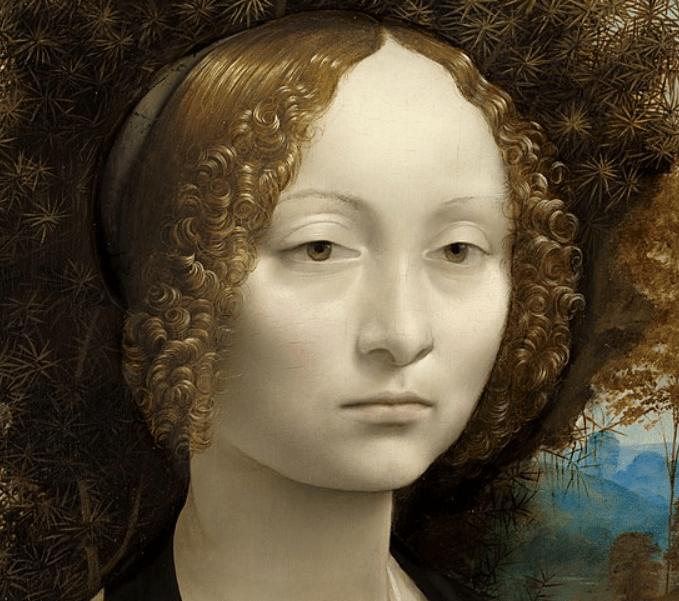
12 Facts About Ginevra de Benci By da Vinci
National Gallery of Art, Washington, DC; Medium: oil on panel Theme: portrait, female School: Florentine Provenance: Reigning Princes of Liechtenstein in Vienna and later Vaduz, principality of Liechtenstein, by 1733, the date of a red wax seal, bearing the Liechtenstein arms, on the reverse;[1] purchased 10 February 1967 by NGA.[2] [1] The name "Ginevra" was too common in the Renaissance to.

Ritratto Di Ginevra De' Benci nonotalkwalk
Ginevra de' Benci is a portrait painting by Leonardo da Vinci of the 15th-century Florentine aristocrat Ginevra de' Benci (born c. 1458). Exhibited at the National Gallery of Art in Washington, D.C. US; it is the only painting by Leonardo on public view in the Americas. Subject
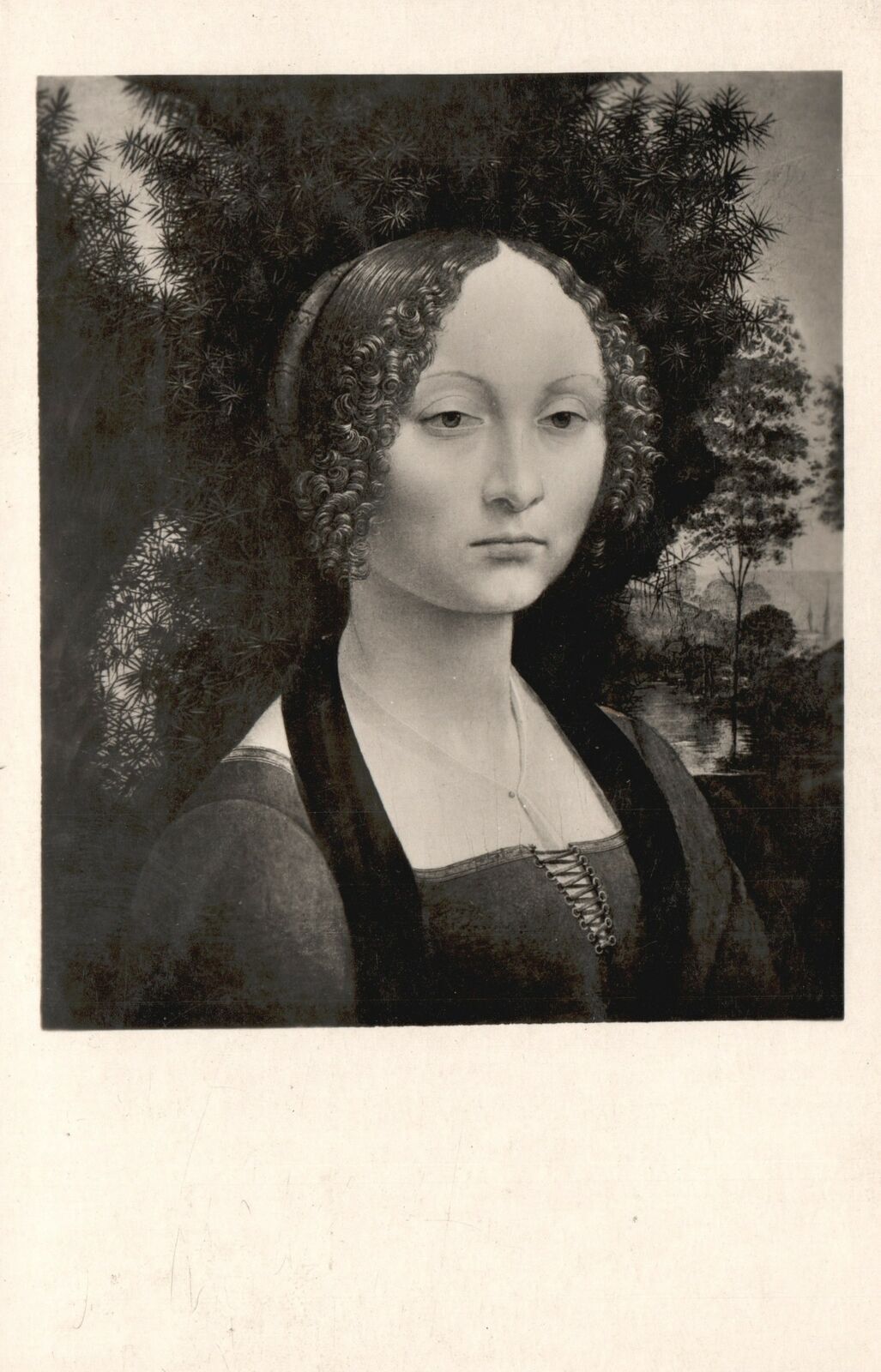
Vintage Postcard Leonardo Da Vinci Portrait Der Ginevra Dei Benci
1)1) Leonardo da Vinci, ((Ginevra de'. 68. 2) Leonardo da Vinci, ((Lady with an Ermine)), Czartoryski Collection, Cracow. and practice. Ginevra de' Benci represents one of Leonardo's early attempts "to make a flat surface display a body as if modelled and separated from this plane." Ginevra's head has the appearance of a large round moon cast.
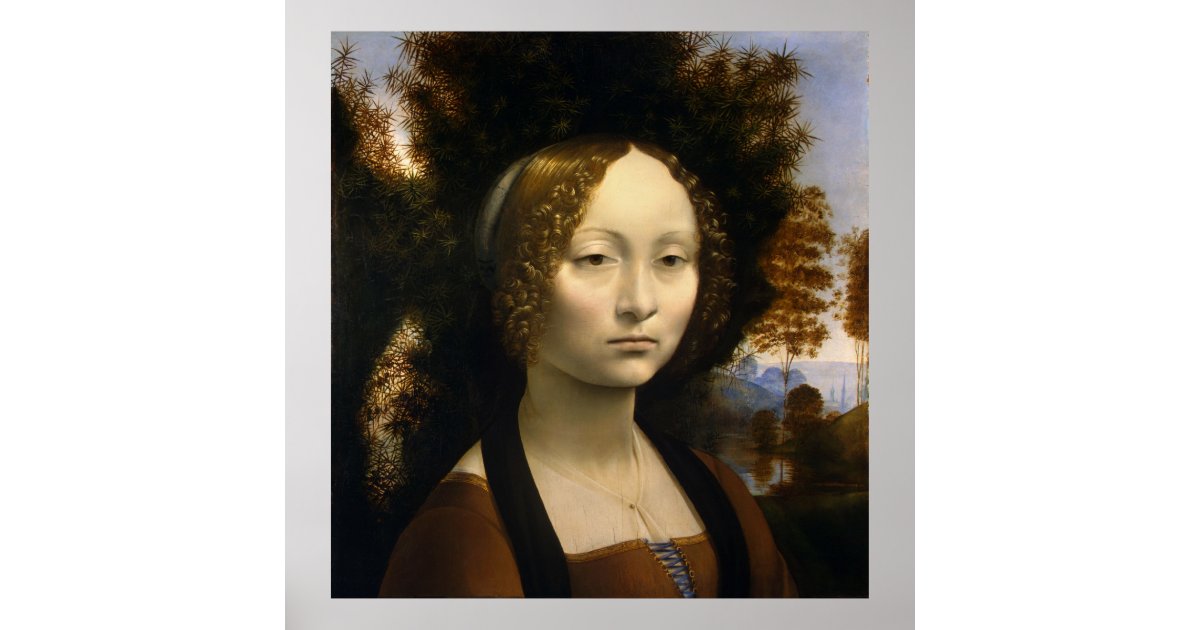
Portrait of Ginevra de Benci by Leonardo da Vinci Poster Zazzle
Washington, DC-The National Gallery of Art in Washington, DC, will present Ginevra's Story, a new, hour-long documentary, narrated in Italian by actress Isabella Rossellini, on RAISAT this summer. The Gallery is the home of Leonardo da Vinci's Ginevra de' Benci, the only painting by the artist in the Western Hemisphere.. Ginevra's Story recounts how Leonardo came to paint the haunting.

Ginevra de’ Benci The Ark of Grace
Ginevra de' Benci herself, and her exclusion from this dia logue is a deficiency in which both old and new style scholar ship have been complicit. I will adduce fresh proof to show that recent interpretations of the Ginevra de' Benci are likely to have misrepresented its origin and purpose. The painting's